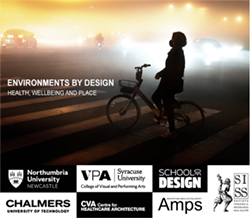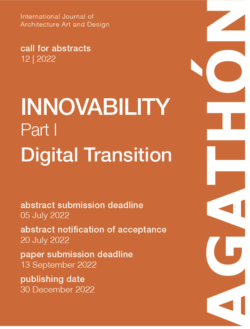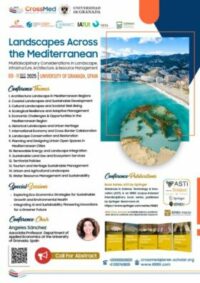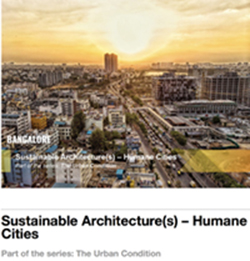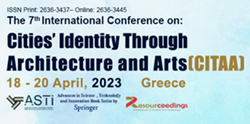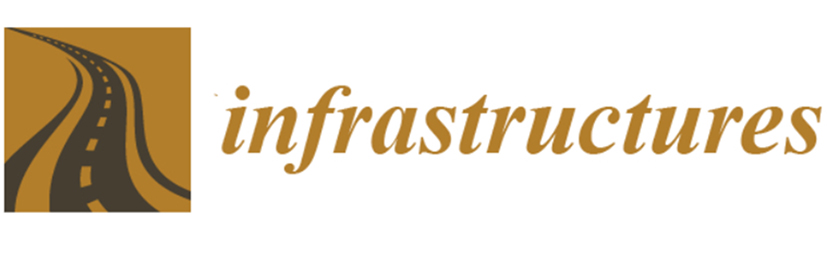ISSN (online): 2412-3811
Call of the Journal:
- Advances in the Management and Application of Construction and Demolition Waste
- Agricultural Infrastructure
- Application of Artificial Intelligence to Model the Behavior of Infrastructure
- Application of Machine Learning and Artificial Intelligence in NDE and Structural Health Monitoring of Civil Infrastructures
- Big Data Analysis and Visualization in Transport Infrastructure | Challenges for Operations, Control, and Planning
- Critical Infrastructure Resilience Facing Extreme Weather Events
- Designing and Managing the Next Generation of Transportation Infrastructure
- Durability of Concrete Infrastructure
- Innovative Practices into Road Pavement Maintenance Management
- Inspection, Assessment and Retrofit of Transport Infrastructure
- Neural Networks in Land Transport, Vehicle and Railway Engineering
- Non-destructive Testing and Evaluation for Civil Infrastructures
- Pavement Management | Inspection and Life-Cycle Assessment
- Pedestrian and Bicycle Mobility in the Future Cities of the World | Between Adapting Infrastructure and Changing Behavior
- Rail Infrastructures
- Reliability and Durability of Pipelines
- Remote Sensing and Infrastructure Information Models | Methods, Applications and Smart Management of Infrastructure Data
- Research and Developments in Pavements
- Resilient and Smart Transport Infrastructure for Connected and Autonomous Vehicles
- Reusing, Recycling and Repurposing Infrastructure | Components and Construction Materials
- Road and Rail Infrastructures
- Seismic Reliability Assessment and Advances in Structural Modelling
- Selected Papers from the 8th Civil Structural Health Monitoring Workshop
- Smart Infrastructures
- Smart Materials for Sustainable Infrastructures
- Smart, Sustainable and Resilient Infrastructures
- Structural Assessment and Health Monitoring of Infrastructures
- Structural Health Monitoring of Civil Infrastructures
- Structural Performances of Bridges
- Sustainability of Building Materials and Structures
- Sustainability of Concrete Infrastructures | New Applications, Monitoring and Retrofitting
- Ultra-High Performance Concrete (UHPC)
- Underground Infrastructure Engineering
Jul
2021
Transportation agencies around the world are presented with a set of challenges including climate change and natural disaster, ageing transportation infrastructure, and anticipated changes in forms of mobility. Managing and overcoming those challenges lies in the ability to: develop tools that facilitate efficient large-scale assessment and the proactive management of existing infrastructure; use information about existing infrastructure to propose innovations to roadway design provisions that would ensure that future infrastructure is capable of handling the anticipated changes. The use of remote sensing data and GIS tools including mobile LiDAR data, photogrammetry is critical to achieving the aforementioned objectives. These tools have made large volumes of data readily available to transportation agencies and municipalities, nonetheless, efficient processing and semantic segmentation of critical information from those datasets and the ability to relate the extracted information to other components of the transportation system is extremely challenging. To promote more resilient transportation infrastructure, this special issue invites papers that propose novel methods and approaches that help utilize remote sensing and GIS data to promote efficient management and improved design of transportation infrastructure. Potential areas of interest for this call for papers include: Semantic segmentation tools for the extraction roadside assets and the assessment of roadway design elements and from remote sensing data; Decision support tools that use remote sensing data to improve the efficiency of managing and accessing conditions of existing transportation infrastructure; Investigations focused on identification and mapping of sections of the transportation infrastructure that are most vulnerable to natural disaster such as flooding and wildfires; Models developed to help understand the relationships between critical design elements of roadway infrastructure, road user behaviour, road user demographics, traffic, and roadway safety.
Keywords: Infrastructure Resiliency; Remote Sensing; Traffic Safety; Semantic Segmentation; LiDAR Technology; Roadway Design.
Designing and Managing the Next Generation of Transportation Infrastructure
Transportation agencies around the world are presented with a set of challenges including climate change and natural disaster, ageing transportation infrastructure, and anticipated changes in forms of mobility. Managing and overcoming those challenges lies in the ability to: develop tools that facilitate efficient large-scale assessment and the proactive management of existing infrastructure; use information about existing infrastructure to propose innovations to roadway design provisions that would ensure that future infrastructure is capable of handling the anticipated changes. The use of remote sensing data and GIS tools including mobile LiDAR data, photogrammetry is critical to achieving the aforementioned objectives. These tools have made large volumes of data readily available to transportation agencies and municipalities, nonetheless, efficient processing and semantic segmentation of critical information from those datasets and the ability to relate the extracted information to other components of the transportation system is extremely challenging. To promote more resilient transportation infrastructure, this special issue invites papers that propose novel methods and approaches that help utilize remote sensing and GIS data to promote efficient management and improved design of transportation infrastructure. Potential areas of interest for this call for papers include: Semantic segmentation tools for the extraction roadside assets and the assessment of roadway design elements and from remote sensing data; Decision support tools that use remote sensing data to improve the efficiency of managing and accessing conditions of existing transportation infrastructure; Investigations focused on identification and mapping of sections of the transportation infrastructure that are most vulnerable to natural disaster such as flooding and wildfires; Models developed to help understand the relationships between critical design elements of roadway infrastructure, road user behaviour, road user demographics, traffic, and roadway safety.
Keywords: Infrastructure Resiliency; Remote Sensing; Traffic Safety; Semantic Segmentation; LiDAR Technology; Roadway Design.
DOAJ, Inspec (IET), Scopus (Elsevier), CLOCKSS (Digital Archive), e-Helvetica (Swiss National Library Digital Archive), Google Scholar, J-Gate (Informatics India), ProQuest Central (ProQuest), Science In Context (Gale/Cengage Learning).
Info at: www.mdpi.com/journal/infrastructures/apc
Guest Editors
Dr. Suliman Gargoum
Mr. Lloyd Karsten

